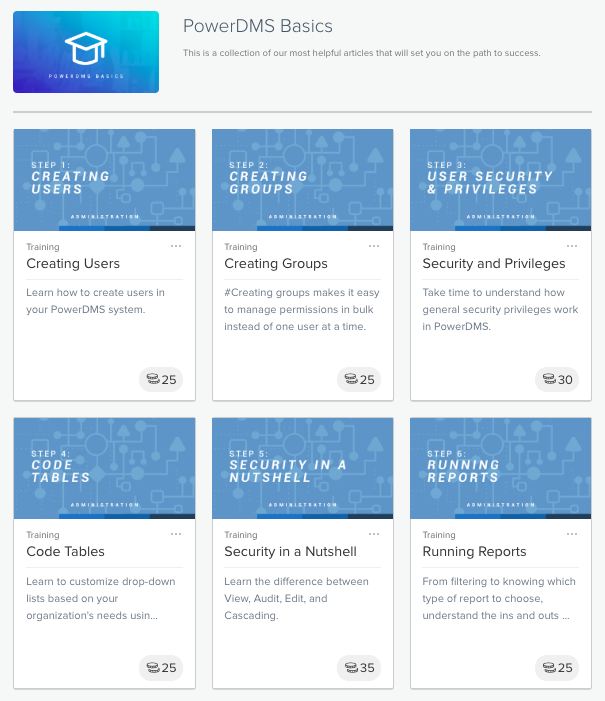According to Forrester, we are in the age of the customer, in which buyers, empowered by technology and social media, possess control of their own journeys. To avoid getting left behind, companies need to embrace this shift by looking to their customers for insights on how to improve marketing, product development and customer success.
An online community is the place to establish the customer connections needed to keep up with the changing marketplace.
In our recent “Ask the Community Experts” webinar, I had the opportunity to talk to three expert community managers—all of them previous BAMMIE award winners—on how they’ve managed to build thriving digital communities that provide value to both their business and their customers.
This all-star panel featured Wiley’s Vice President of Customer Success Nicole Dingley, PowerDMS’ Director of Customer Marketing Ray Lau and ADP’s Senior Strategy Analyst of Client Experience Sarah Schreiner.
Check out our previous Q&A with Nicole Dingley for her tips on nurturing your customer community by achieving the right balance of give and take with customers.

PowerDMS is a B2B document management software company. They help companies manage their most important files, such as policies, procedures, and training information. Ray and his team launched the company’s advocate community known as PowerDMS Champions a little over two years ago.
Through their advocacy program, PowerDMS has generated over $1 Million in opportunities influenced by customer advocates. Ray’s team has largely focused on leveraging their community to generate reviews, references, and referrals—or “the three R’s” as he calls them.
“We’re really fortunate to have a customer advocate community that has ultimately helped transform the business for us,” says Ray. Read on to learn how PowerDMS scaled their advocacy community to accomplish the feats it does today and get Ray’s tips and tricks to help you do the same.
Q: What challenges did your organization face before implementing your customer community?
Ray: When we first started looking at launching a customer advocate community, one of the first things we wanted to address was measuring the impact of word-of-mouth. As most organizations go, we always hear that word-of-mouth is a big driver of new business. Anecdotally, we knew that it was very successful—but anecdotes aren’t good metrics to measure anything off of.
When we first started pitching the idea of a formalized advocacy program to our Chief Customer Officer, he wanted to see if we could start off with a pilot program. We first used spreadsheets and emails, which is what I would call “the stone age of advocacy”. As you can imagine, it was not very scalable. But, even then, we were able to track customers’ activities and ask them to do things for us.
One of the coolest things we did was ask customers to complete Google reviews for us. We ended up getting seven reviews, whereas we had previously only had one or two organic reviews. When I shared this at our all hands meeting, the company’s leaders were so struck by the power of our customers’ testimonials that they decided we really needed to invest in this.
Q: What’s the greatest success you’ve seen or obtained through running your customer community?
Ray: Generating those three R’s—reviews, references and referrals—has always been big for us. Those are the things that are going to prove your community’s ROI. But, I think one of the most valuable aspects of the community has been the access we have to our customers.
I remember growing up playing Nintendo—I might be dating myself here—there was this product called the Game Genie. You would put in a cheat code at the beginning of the game and you could essentially do whatever you wanted. You had unlimited lives, you could go faster, and you were stronger than any enemy.
I feel that having a customer advocate community is really like having a cheat code for growing your business. Anytime you need anything from a customer—be it survey answers, product feedback, beta testers, referrals, references—the community will be there. They’re willing to help you with whatever your request is, and they’re going to enjoy the experience. Everybody wins when that happens.
Q: What advice do you have for others looking to launch a customer community?
Ray: Something that really helped us was to create a very practical video to guide our customers as they were introduced to the community. We show them what the community looks like and what types of interactions they’ll have there. We set the stage for what their expectations will be.
You can start by presenting your customer community as a place for advocacy, and as you expand the program into different parts of the customer journey, explain these various use cases to the customer.
Also, it’s important to have very defined objectives from the outset and be upfront about what the community is. When someone comes into this great place you’ve built, it’s helpful to frame it for them so that they understand what success will look like for them and their business.
Q: What are some of the benefits customers need to see to join the community and stay engaged?
Ray: Positioning customers to become experts in your product and field is pivotal. As they continue to provide their insights and reviews, you’re also helping them build a platform for themselves. If you can help them grow, then you will grow with them.
As a business, if you can equip your customers to progress and have great careers, then it does lend itself to success back to your organization as well. Those are great points that will show customers why they should be a part of your community.

Q: How has your career developed given your interactions with customers?
Ray: I believe customer marketing is important in every organization, especially if you’re in a B2B SaaS business—that’s really the bread and butter. I look at customer marketing and demand generation as two sides of the same coin. In most organizations, there’s a huge focus on bringing in new acquisitions, new sales, and new revenue—that’s traditionally what we think of as marketing.
Now that we’re in the age of the customer, I think customer experience is becoming more and more important, especially in top organizations. As we recognize that there aren’t necessarily defined organizational structures for customer marketing, we may find that there’s room to experiment with something like an advocacy program.
Personally, customer marketing and my partnership with Influitive has been a tremendous opportunity for me and my career. Being able to tangibly show the results of our advocacy program has really helped me grow into the position I’m in today as the Director of Customer Marketing. We now have a team of customer marketers who are really focusing on our customers’ post-sale journey.
You want to make sure that your customers are happy and create the best possible experience for them. This helps your organization win, as your customers will want to come back and help your business continue to grow.
Q: How long does it take to realize the way you’re trying to engage customers or create advocates isn’t really working and what should you do next?
Ray: Advocacy is really the cherry on top of a great product and customer experience. But, if there’s no sundae and all you have is a cherry, that’s not going to be very satisfying. There’s a host of other things you need to have in place to really make sure you’re ready to have a customer advocacy program.
These include having a strong customer experience and solid customer success rate. These are the building blocks you should have before deciding to launch a customer advocate community, because it alone can’t save a customer from having a bad experience.
Going back to the question of how to see if your efforts are working, I think it’s always important to have good metrics for measuring success. If for whatever reason you’re not able to have these—for instance you might not have enough data—you can look at other things that might feed into the metrics you’re hoping for.
It’s also important to nurture your customer community before asking for something like referrals. If you’re just asking your customers to complete requests for you all the time, then nobody’s going to want to be a part of your community.
It doesn’t matter how good your rewards are—bribing customers to be part of your community won’t lead to sustainable engagement.
Q: When were you ready to try to get leadership’s buy-in to invest in the software needed to scale your program?
Ray: I went through the process of starting our advocacy initiatives with the end goal of having software to manage them. But to get that, I had to jump through quite a few hoops. I think it’s really important to just start, however you can.
With our old spreadsheets and email method, we asked 20 people for reviews and were able to get seven. You can start by showing leadership what advocacy looks like on a small scale and how many hours you invested. Then you can say, “We’re only asking this many customers, but what if we had something to helps us scale up?”
Pitching it that way was really helpful for us. I know that having an executive sponsor was the only way I could make things work. If you’re able to find someone from leadership that shares your vision and to whom you can really sell the idea of investing in a software platform, they will do the job of selling the rest of the leadership team on it.
It’s very difficult to get the entire leadership team on board if you’re acting as a lone ranger, so it’s important to have that executive sponsorship having your back. And if leadership shares the same vision as you, then they will feel part of the program as well. When it succeeds, they will feel part of that success.
Q: What KPIs would you recommend for someone in the first year of managing a customer community?
Ray: In the first year, you’re especially interested in the number of people you can drive to your community. So, there are a couple different approaches you can take with that.
You could send out a mass invitation, but there are some drawbacks to that because you might not feel prepared to just let anyone in. Before doing that, maybe you want to start by inviting one segment of your customers (for instance, your best customers—the ones who rated a 9 or 10 on your NPS).
Starting with a smaller segment of your happy customers is also a good idea because you know they’ll be forgiving as you work out your program’s initial kinks. You can opt for quality growth of your community by keeping track of each invitation you send out over time.
Transform your business by becoming customer-powered
You can find the full recording of our “Ask the Community Experts” webinar here. Be sure to stay tuned for more Q&As from this series, showcasing stories from members of the Influitive community who have successfully tapped into their customer network to fuel their business strategy. For more in-depth resources on how you can grow your organization with the power of your customers, you can check out our Customer-Powered Enterprise playbook.



